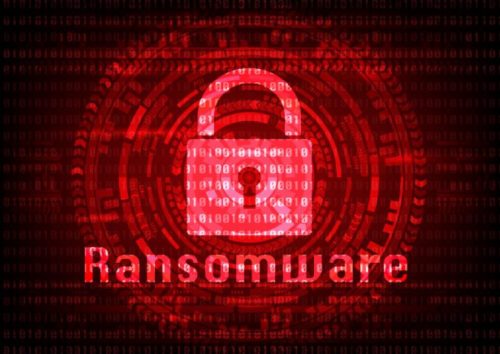Ransomware is one of the most common digital threats for individual users and enterprises alike. Criminals use this type of malicious software to encrypt critical data and demand money to give it back. With the global ransomware damages reaching billions each year, this threat becomes a significant concern. This article will give you a summary of the crucial ransomware attack vectors and protection measures.

Attack Vectors
There are several ways for ransomware to get into your systems. Here are some of the most common:
- Phishing emails. Phishing is a social engineering tactic used to trick a user into letting a dangerous program into the system. By clicking a link or downloading an attachment, a careless user creates a risk for the whole system.
- Malvertising is a way to hide malicious code within ads. Hackers ran ad campaigns to make users click. However, instead of a legitimate website, a click leads to a website containing harmful code.
- Cloud applications. By providing an application with access to your data, you may cause a ransomware attack. How? Hackers can use the access rights you’ve provided to a seemingly safe app. As a result, your files can be looked through, deleted, stolen, or infected with ransomware.
- Bruteforce attacks. In some cases, hackers will try to hack a user’s account to download malware into the targeted system.
- Removable media. Criminals can use corrupted USBs or hard drives to spread ransomware. Though remote working environments don’t rely on removable drives as much as traditional offices, this method is still worth mentioning. More about ransomware attack sources: https://spinbackup.com/blog/how-do-you-get-ransomware-5-main-sources/
Depending on a ransomware strain, an attack’s execution may differ. But the consequences are pretty much the same—downtime costs, reputational and other damages. And, of course, a ransom. Keep in mind that paying criminals is not recommended as negotiating with criminals can result in fines.
Ransomware Protection: Best Practices
A powerful anti-ransomware strategy requires a multi-layered approach. Why? Various protection measures have their strengths and weaknesses. Having several layers of defense will help you compensate for each weakness with another measure’s strength.
Create a Ransomware Recovery Plan
Creating a ransomware recovery plan is a great way to mitigate an attack’s damage. In your plan, you have to specify the actions, tools, and skills required to recover from an attack as soon as possible. Of course, specific actions vary depending on your company’s resources, workflow, and infrastructure.
Let’s say your operations depend on cloud storage services like Google Drive and OneDrive. Such services provide some anti-ransomware functionality, yet often attacks are successful. That’s why you need to plan additional measures to restore your files in case of an attack. Google Drive ransomware recovery and prevention tools can protect your files from attacks and restore damaged data.
Data backup is an essential part of any recovery strategy. With a backup, you can restore your data even if it was encrypted during a ransomware attack.
Control Applications
Modern ransomware attacks often involve malicious SaaS apps. That’s why you have to control your apps meticulously. You can use specialized tools that will help you to detect apps connected to your cloud data and assess their risk. After the assessment is completed, there are two actions you can take.
The first one is to blacklist apps. If you discover a potentially dangerous app, it would be necessary to revoke any access it has and forbid this app from connecting to your data in the future.
Another approach to app security is whitelisting. This procedure means that you allow only a specific list of trustworthy apps to access your data.
Both of these approaches will help you to reduce the probability of using a corrupted app and, therefore, protect your data from ransomware.
Maintain Strong Password and Authentication Policies
Powerful passwords and authentication apps will protect you from brute force attacks. Make sure that everyone in your company avoids using simple generic passwords.
As an additional layer of protection, you can use mobile apps such as Google Authenticator. With this function enabled, you’ll require both your password and a special code to log in.
Train Yourself and Your Colleagues
Arranging security awareness training is a great way to learn about various digital threats, including ransomware. Training and attack simulations empower users’ knowledge, helping to recognize phishing messages and potentially dangerous websites. Long story short, a trained person is less likely to make mistakes while working with data.
As a result, the probability of a successful attack is reduced. However, no training can ensure a 100% error-free user behavior. After all, even a skilled worker can face fatigue or a moment of carelessness. Other downsides of training are high costs and organizational challenges, especially if you manage a large team that works remotely.
Manage Vulnerabilities
Vulnerability management helps you to locate and fix gaps in your operating systems. This measure will help you in case ransomware is spread using malvertising or exploits in your security systems.
Though being a good security practice in general, vulnerability management techniques are not always effective against ransomware. First of all, the management process usually excludes end-user devices. Secondly, there are time limitations. It takes time to discover vulnerabilities and patch the system to fix them.
Use Security Software
Various tools help you protect your critical information against malware attacks. These tools vary based on their functions and approaches to ransomware detection.
While choosing a protection tool, pay attention to its capabilities. Ideally, you’ll need to find an end-to-end solution that combines ransomware detection and remediation.
The issue is that anti-ransomware tools are not always deployed, updated, or configured correctly. Especially now, with many teams working remotely. So don’t forget that it’s recommended to keep your security software updated.
Interesting related Article: “Five reasons you should use advanced cyber threat protection at your business“

